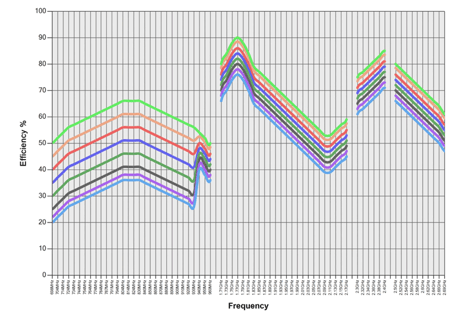As wireless medical devices become smaller, more sophisticated and more connected, antenna design is under pressure to keep up. The challenge? Delivering high-efficiency signal transmission in increasingly compact form factors. One key enabler of this shift is the use of high-permittivity ceramic (HPC) materials, an advanced material class helping engineers shrink antennas without sacrificing performance.
In this article, we explore how HPC materials contribute to the miniaturisation of antennas, how they improve signal integrity, and why they’re becoming essential for multi-band functionality in space-constrained medical applications.
What are high-permittivity materials?
High-permittivity (or high-dielectric) materials have a dielectric constant significantly higher than standard substrates like FR4 or polyimide. By slowing the propagation of electromagnetic waves, they reduce the wavelength within the material, allowing the antenna to achieve its required electrical length in a much smaller physical space. This property makes high-permittivity materials ideal for antenna designs targeting low-frequency operation in compact devices, which is a common requirement in medical wearables, implantables and diagnostic equipment.
Ceramic-based high-permittivity materials, in particular, offer the added benefits of stability, low thermal expansion, and tight manufacturing tolerances, which are crucial for consistent wireless performance in tightly regulated medical environments.
Miniaturisation without compromising on performance
Traditionally, shrinking an antenna meant accepting trade-offs; reduced efficiency, narrower bandwidth, or compromised radiation performance. High-permittivity ceramics help mitigate these limitations.
By increasing the dielectric constant of the substrate, designers can reduce antenna size without shifting its resonant frequency. This is especially valuable in medical or wearable devices, where space is at a premium. Compact devices that sit on or inside the body can now support efficient wireless functionality without altering form factors.
This material-led approach to miniaturisation marks a shift from earlier methods (like helical or meandered traces) which, while effective, often involve complex tuning and performance compromises at smaller scales.
Enabling multi-band and multi-protocol designs
Modern medical devices are rarely single-purpose. A remote patient monitor, for example, may need to support Bluetooth for real-time syncing, NB-IoT for long-range connectivity and NFC for local pairing or setup.
These multi-protocol demands must be met within extremely compact enclosures, posing a major challenge for antenna design. High-permittivity ceramic (HPC) antennas offer a powerful solution. Their compact footprint, precise tuning capabilities and mechanical robustness make it possible to support multiple frequency bands from a single antenna structure.
This enables designers to integrate multiple wireless protocols without the need for multiple antennas, helping conserve space and simplify design whilst maintaining strong signal performance and energy efficiency.
A material-led path to smarter medical devices
High-permittivity ceramics go beyond being just a tool for shrinking antennas. They’re enabling a new generation of wireless medical devices that are smaller, more efficient and more capable than ever before. Whether it’s an implant that needs reliable sub-GHz connectivity, or a wearable device juggling multiple wireless protocols, HPC materials provide the performance foundation needed to succeed.
At Antenova, we work closely with medical device designers to unlock the potential of high-dielectric materials in wireless product design. Our ceramic-based antenna solutions are compact, efficient and ready to support complex multi-band requirements all whilst simplifying integration and accelerating time to market.
Download our free technical guide on antenna selection to explore how these materials and antennas can supercharge your next medical device.




